17 Carrot Hacks That Will Make You Feel Like A Pro Chef
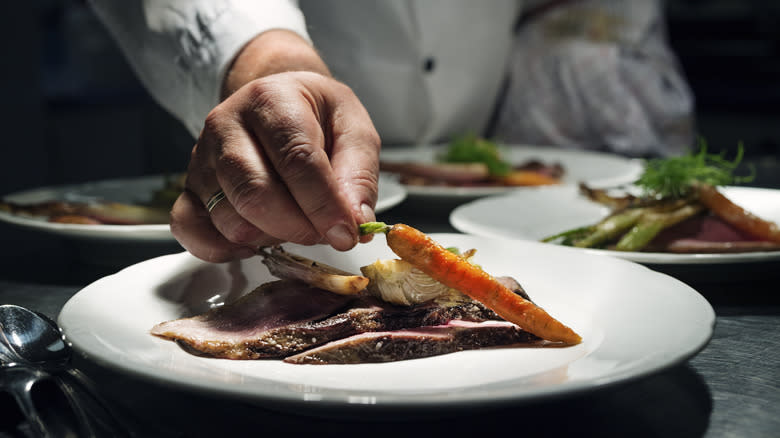
We may receive a commission on purchases made from links.
One of the benefits of working as a professional chef is gaining expertise about the myriad ways a specific ingredient can be prepared for maximum convenience, efficacy, nutritional value, and, above all, flavor. A favorite ingredient of mine to work with as a chef over the years I have spent cooking is the humble carrot.
Carrots may seem like an afterthought in many recipes or one of many components that confer rich flavor in a soup or stew. Its superpowers go above and beyond a mirepoix or a low-calorie snack option. Indeed, carrots are utilitarian powerhouses capable of enhancing sweetness, savoriness, mouthfeel, and aroma in dishes ranging from breakfast to dinner. As noted by Healthline, they are one of the healthiest foods you can consume, rife with fiber, vitamins, and invaluable nutrients like beta-carotene and lutein.
If you have limited your carrot consumption to raw baby varieties dipped in ranch dressing, I'm here to help expand your culinary repertoire and teach you all the hacks and tricks of the trade that can help turn your carrot game from catastrophic to compelling. Read on to discover everything you never knew you needed to know about cooking with carrots.
Read more: French Cooking Tricks You Need In Your Life
Shred Carrots To Make Them Sweeter
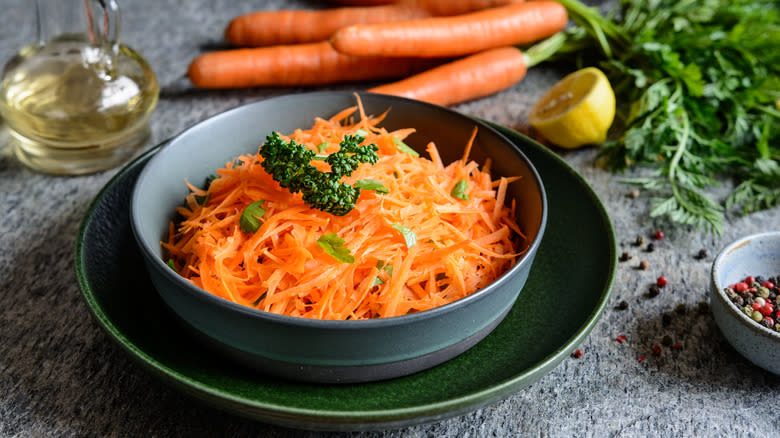
To amplify the inherent sweetness of carrots, shred them. The process of doing so will help to break down the cellular structure of the dense root vegetable, enabling its natural sugars to emerge. The key is how you shred them. Overly finely shredded carrots can have a mushy mouthfeel, while those that are more stick-like can be a bit toothsome.
The optimum way to shred carrots is to use the mid-sized shredding attachment of a food processor. You can process carrots manually using the most expansive holes of a box grater if you'd like to build upper body strength and get a good cardio workout. Whichever you choose, keep grated carrots on hand for easy use in any recipe, sweet or savory.
Slaws, croquettes, and salads are optimum recipes for using shredded carrots. One of the best is a shredded carrot salad frequently served in Morocco. The recipe I learned to make while in Morocco incorporated raisins and was seasoned with ground cinnamon and ginger, orange blossom water, and argan oil. It is a sweet, nutty, citrusy delight. Of course, you can always use them in baked goods like quick bread and carrot cake for texture and flavor and to add a little sneaky healthy ingredient that your whole family will love.
Roast Carrots For A Nutty Flavor
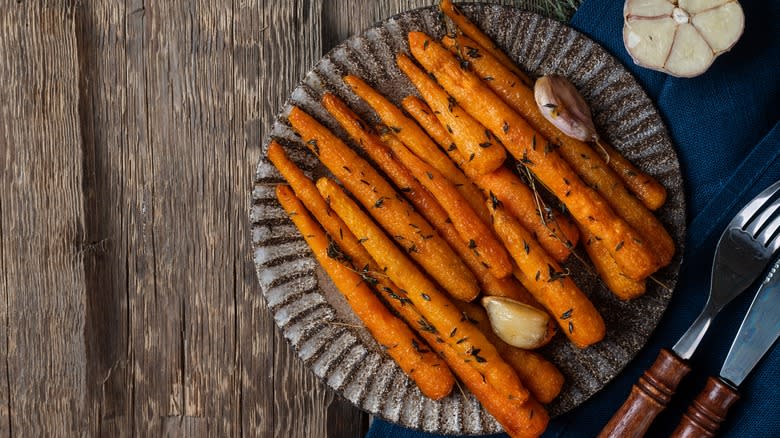
Like other root vegetables, carrots contain natural sugars and starches that can be coaxed out of them depending on how you cook them. The best way to amplify these characteristics of a carrot is to roast it. You can do so either whole or in chunks, depending on your preferences and the diameter of the carrot. Either way, the key is to allow the natural sugars to begin to caramelize, giving them a beautiful hint of burnt color, al dente texture, and an inherent nuttiness that is habit-forming.
An added benefit to roasting carrots, according to Consumer Reports, is that carrots are a vegetable that improves in nutritional value when cooked. Doing so increases the accessibility of nutrients, like beta carotene, facilitating more complete absorption. Furthermore, roasting is preferred over boiling carrots because those nutrients are retained within the vegetable rather than lost in the cooking water.
When roasting carrots, consider lightly coating them in a nut oil, like sesame or almond, to accentuate those inherent caramel notes. And don't forget to liberally salt them to help draw out their moisture and encourage the Maillard reaction. Doing so will result in savory, umami-rich flavors and aromas while retaining a slightly al dente texture.
Freeze Them For Long Term Storage
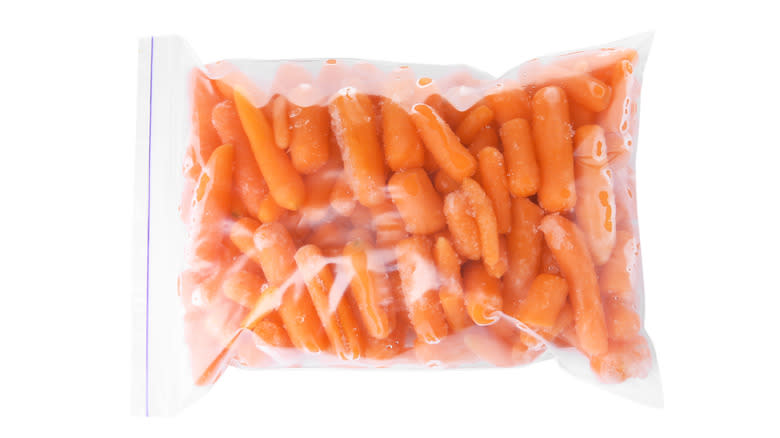
Carrots have a unique capacity to thrive in cold climates. As temperatures drop, the starches within the carrot begin to morph into sugars, yielding a sweeter result. Carrots dug up after a frost are often given the moniker "candy carrots," highlighting this unique built-in survival strategy. What this means for you is more delicious carrots.
If you do not grow your carrots, you can take advantage of their unique capacity to withstand the cold by freezing them. If you purchase a large bag of carrots you will not consume before they are past their prime, consider tossing them into the freezer.
Though you can freeze them as is, blanching them will help retain a better color and texture. Peel and cut your carrots into chunks and toss them into boiling water for approximately three minutes before shocking them in an ice water bath to halt the cooking process and prevent further softening. Once they have cooled, dry them thoroughly before placing them in a single layer onto a baking sheet and freezing them overnight.
You can transfer these frozen carrots to a freezer bag or airtight container and store them for up to a year. Keep your frozen carrots toward the back of the freezer, away from the door, for the best results. Doing so will minimize the possibility of thawing and refreezing, preventing freezer burn.
Use Your Vegetable Peeler For The Perfect Salad
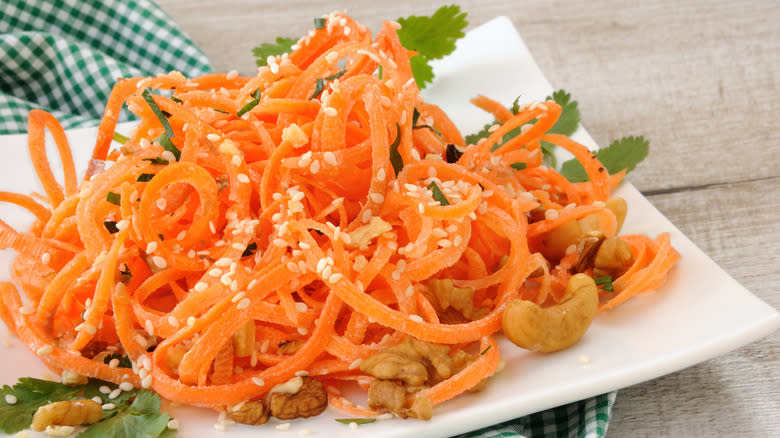
A carrot salad made from ribbon-like slices recently attained cult-like status thanks to several viral posts circulated across various social media channels. The irony is that using a vegetable peeler to turn ingredients from zucchini to cucumbers into salads and quick stir-fries is not exactly novel. Chefs have been doing this forever with all kinds of vegetables.
The beauty of this process is similar to using a spiralizer to create noodles from a vegetable. Doing so encourages the consumption of more vegetables while making them more receptive to absorbing flavors from spices, dressings, and sauces. As they marinate in these ingredients, they tenderize, making every bite a vibrant burst of flavor.
One such shaved vegetable salad that is particularly attractive includes beets, carrots, and fennel combined with a dressing made from orange juice, sesame oil, Dijon mustard, and honey or maple syrup. The whole thing is garnished with fennel fronds, roasted nuts, and crumbled goat cheese for a complex texture and flavor. You can change this up using any vegetable combination you enjoy in season and incorporate added flavors by tossing in some spices, like cumin, paprika, or chili powder. Just remember to keep your eye on color. The more color you incorporate, the more visually appealing the dish and the more varied the nutrients.
Pickle Them To Brighten Up Any Recipe
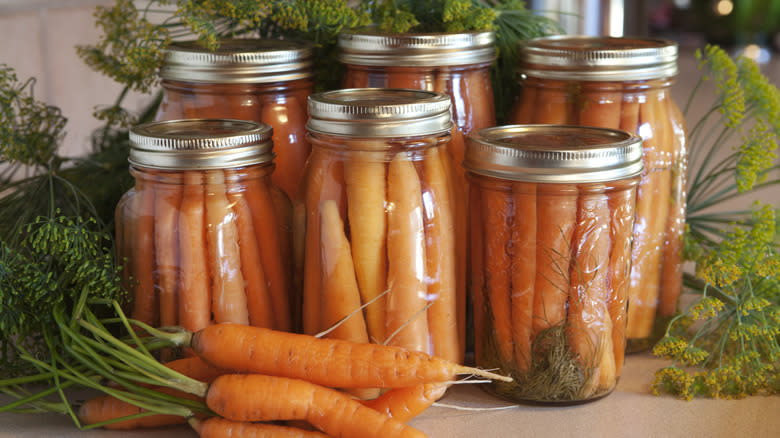
Pickling is an age-old method for preserving vegetables. There are two methods for pickling. The first involves fermenting the vegetables, and the second involves a quick pickling process in which vegetables are cured in a brine made of salt and vinegar with added seasonings and aromatics. Though both extend the shelf-life of vegetables, probiotic health benefits can only be obtained from pickles that have undergone a fermentation process, as the Cleveland Clinic notes.
A quick pickle of carrot sticks or slices can be the ideal way to extend their shelf-life while infusing them with diverse flavors. Common flavorings to add to pickled carrots include peppercorns, whole spices like cinnamon sticks or allspice, chili peppers, and onion slices or garlic cloves. Pickled carrots can be stored for approximately a month when properly refrigerated. The key is to keep them in an airtight container and to avoid cross-contamination with other ingredients.
Pickled carrots are marvelous because they provide textural interest and elements of salt and acid that can boost flavor in salads or slaws, charcuterie boards with pungent cheeses, and added to cocktails, like a spicy bloody mary. Do note that pickled vegetables contain quite a bit of salt, so you should not overindulge if you have high blood pressure or are consuming them with other salty ingredients.
Braise Them For The Ideal Cooked Texture
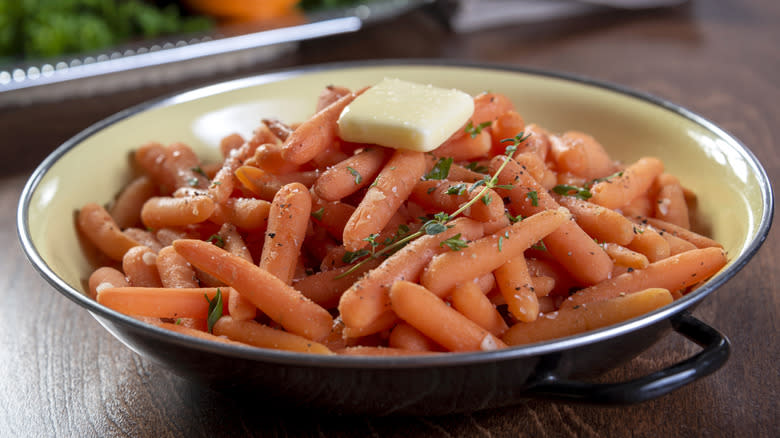
Braising is traditionally a slow cooking method that encourages meat or vegetables to become tender while simultaneously developing savory, rich flavors. For meats, it often begins by pan-searing them before adding liquid and aromatics to the pan. When braising vegetables, like carrots, the pan-searing step is generally skipped, and the cooking time is shortened so as not to overcook them. The key is the flavorings added and only adding enough liquid to create steam in the cooking vessel, but not so much as to submerge the meat or vegetables.
To braise carrots, always begin with fat at the bottom of the pan, like olive or sesame oil. Build the flavors by incorporating aromatics, like minced garlic, spices, dried herbs, and a cooking liquid. A cooking liquid with some acid, like wine or orange juice, can help tenderize the carrots while infusing them with flavor and aroma. Lastly, try adding honey or maple syrup to develop that shiny exterior glaze that will envelop the carrots. These will play off the inherent sweetness of the carrots.
The key is to allow the carrots to simmer in the braising liquid long enough to become tender without overcooking them. Once the carrots are cooked to an al dente texture, remove the lid, allowing some liquid to evaporate and thicken to create that saucy glaze. For extra flavor, garnish your braised glazed carrots with freshly chopped herbs, like parsley or basil.
Leave The Peels Intact For More Earthy Flavor
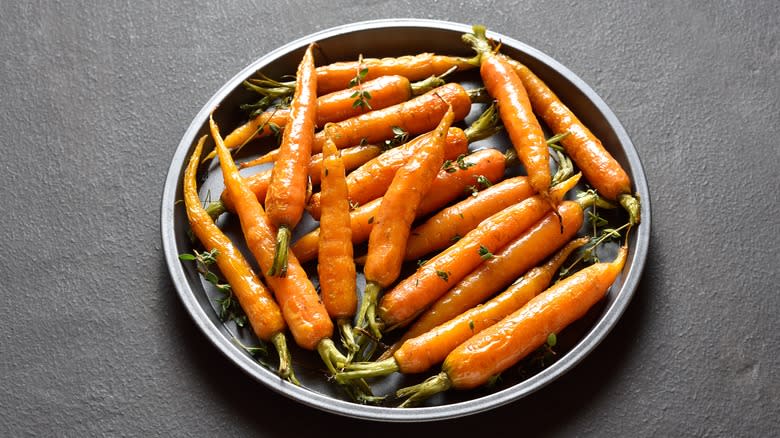
Whether or not to peel carrots depends on a few factors, including nutritional value, individual preference, and cooking methods. Based strictly on nutritional value, you may leave the peels intact as long as they are not damaged. According to Livestrong, several nutrients are found in higher proportions in the peels of the carrot than in the meat itself, including vitamin C, niacin, and phytonutrients.
Where individual preference is concerned, the peels of carrots can often be bitter and a touch toothsome once cooked compared to the rest of the carrots. For some, this may be a distraction even in recipes where the dish will be unaffected texturally by not peeling the carrots. If you are not particularly sensitive to additional bitterness and enjoy the contrast in texture, leaving carrots unpeeled may impart an extra earthiness that will enhance the savoriness of your carrots and provide a delightful, snappy texture.
Lastly, in terms of cooking methods, if you intend to serve your carrots raw, mashed, or steamed, you probably want to remove the peels for a smoother texture. In most other cases, including recipes for soups, stews, stir-fries, grilled, roasted, or juiced carrots, the peels can be left as is without interfering with the final texture of the dish. The key is to clean them thoroughly, scrubbing under cold water for at least 30 seconds to remove dirt, pesticides, and insecticides.
Carrot Peels Are Culinary Gold
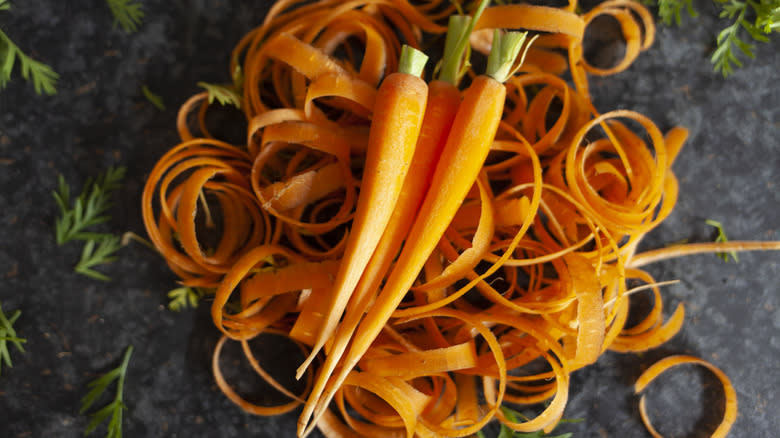
If you do decide to peel your carrots, do not discard them. They can be culinary gold in myriad ways as long as you have thoroughly scrubbed and cleaned them for at least 30 seconds in cold water. Once you have removed the peels from your carrots, you can use them immediately or place them in a freezer bag or airtight container and pop them in the icebox for later use.
The best ways to use these carrot peels are in homemade stocks, puréed soups, sauces, smoothies, hummus, or pesto, where their earthiness and bitter flavor profile can impart complexity without a markedly disrupted texture. If you don't mind the texture, you can use the peels as a garnish, turn them into chips, or candy them. Lastly, you can dehydrate carrot peels and pulverize them into a powder that can easily be incorporated into any recipe for added flavor without influencing the texture.
If you still decide you do not want to consume carrot peels, do not discard them. They are a green material that is ideal for composting. Their high nitrogen content can be invaluable in encouraging speedier decomposition. It is recommended that you divide the peels into more minute portions, thereby expanding the available surface area upon which microorganisms can feed, which expedites the process.
Add Puréed Carrots To Soups, Sauces, And Potatoes For Creaminess
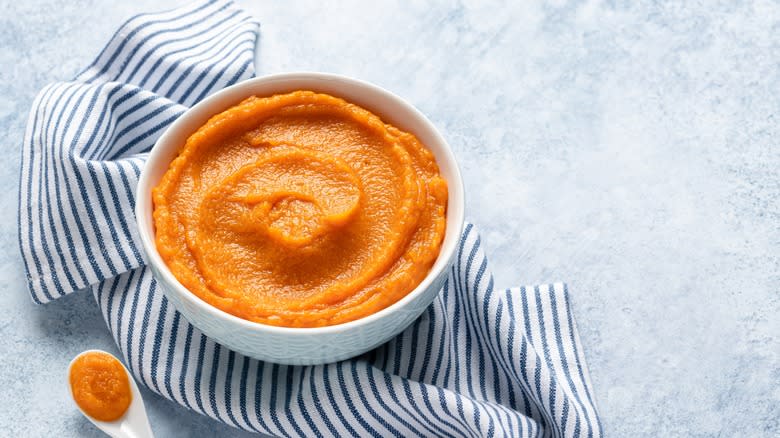
Many recipes for soups or sauces call for a roux or cornstarch slurry to thicken and enhance the final texture. This can often result in an overly dense, clumpy mouthfeel and may be contraindicated for those with wheat, corn, or dairy allergies. For a plant-based, gluten-free, dairy-free, nutrient-rich alternative, puréed cooked vegetables, like carrots, are a delicious and effective option to replace these thickening methods.
The key is to purée your cooked carrots, not to turn them into a liquid. The best way to do this is to use a food processor versus a blender or a juicer. The natural fibers and starch within the cooked carrots will develop a luxurious mouthfeel when properly pulverized, not liquefied.
You can also incorporate puréed carrots into mashed potatoes for a bright color, sweet flavor, and creamy texture. Just be sure to purée the carrots separately from the potatoes. If you add potatoes to a food processor to mash, they will become pasty and gummy rather than smooth and creamy. It is best to fold the puréed carrots into the mashed potatoes with a spatula, stirring until they are thoroughly homogenized.
Learn How To Cut Carrots Properly For Every Recipe
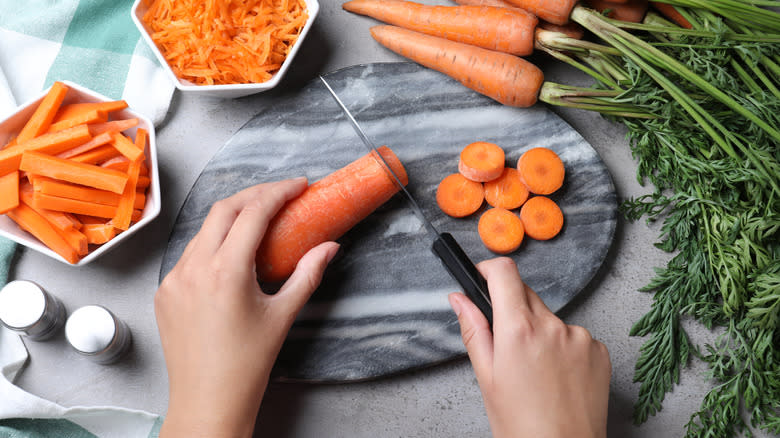
One of the skills you learn to master toward the beginning of any culinary program is how to cut vegetables. There are myriad ways of cutting them, from simple dice to more fancy shapes, like a brunoise or a batonnet. Though most home cooks don't need to master more complicated cuts, it is crucial to have basic knowledge of how to cut vegetables, like a carrot, so they cook efficiently in a given recipe. The key is uniformity and consistency, regardless of the shape you cut them into. You want each piece to be as identical as possible to ensure they cook evenly.
All types of cuts are contingent on using a high-quality, sharp knife. This is particularly important when dealing with a round vegetable like a carrot, which can be unwieldy even with a sharp knife. If you are peeling the carrot, do so before chopping it. Then, cut off both ends of the carrot and divide it into two or three portions that are easier for you to handle.
Lastly, before tackling any cut, remove a thin slice from all sides of the length of the carrot piece you are working with to create a square segment with flat edges that will be safer to work with. Whatever you do, don't throw these slices away. Use them with peels in stocks or soups or toss them into the compost heap.
Temper The Acidity Of Recipes With Carrot Juice
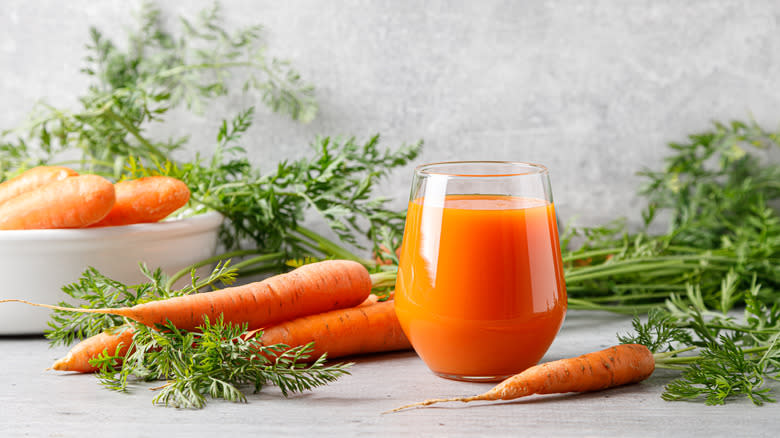
According to Healthline, carrots, like many root vegetables, are higher in carbohydrates and sugars than other vegetables. Each 100-gram serving of raw carrots contains roughly 9.6 grams of carbohydrates and 4.7 grams of sugar. These sugars are responsible for the sweet flavor profile of carrots. Carrots become even more sugary as their cellular structure is broken down, like in juice. This gives them a unique superpower when incorporating them into recipes.
You will often find that recipes for various sauces or soups, particularly those that are tomato-based, recommend adding sugar or honey to help temper the acidity of the final dish. If you are looking for an alternative that can mitigate acidity while simultaneously adding complexity of flavor and nutrients, such as beta carotene, try using some carrot juice instead.
While you can purchase store-bought carrot juice, homemade is better, tastier, and healthier. Use a blender to retain more fiber, which is often lost in juicing. You can also use sweeter carrot varieties, including Amarillo Yellow, Kuroda, and Red Cored Chantenay. Lastly, try juicing carrots harvested after a frost to obtain that candied flavor profile.
Add Some Char For Smoky Flavor
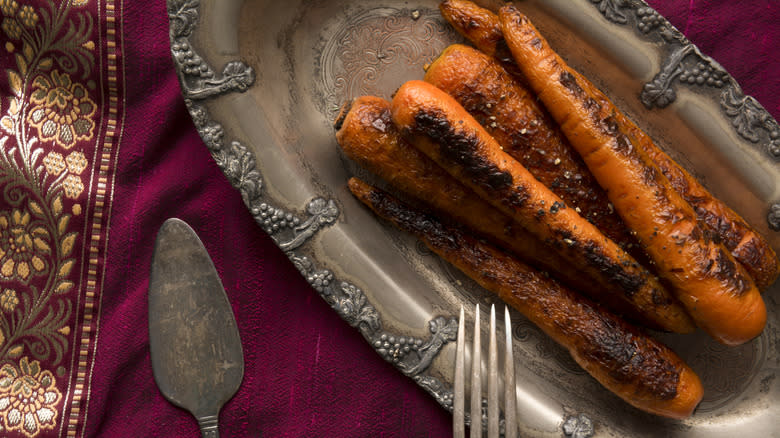
You may have noticed an uptick in restaurants offering blackened or charred ingredients in dishes. Though charring ingredients to impart flavor is a technique as old as the origins of cooking over fire, many chefs are beginning to incorporate the method to infuse ingredients with complexity, smokiness, and a caramelized depth of flavor that cannot otherwise be achieved.
All vegetables can benefit from some fire, but the carrot's natural starches and sugars make them uniquely well-suited to this process. Charred carrots can be eaten as a side dish, a part of a crudité platter, added to a salad, puréed into hummus, or to heighten the flavor of a stock, soup, or stew.
The key is knowing how to char them. If you have a wood-fired oven, throw them in. You can also grill or roast your carrots on high heat to infuse them with that color. Lastly, if you have a gas stove, throw your carrot straight onto the flame of your burner. Use tongs to rotate the carrot occasionally to ensure it blackens evenly on all sides. Just be sure not to incinerate the carrot. You want the exterior to be blackened while the interior maintains its inherent sweetness and begins to tenderize.
Use Savory Spices To Accentuate The Natural Sweetness Of A Carrot
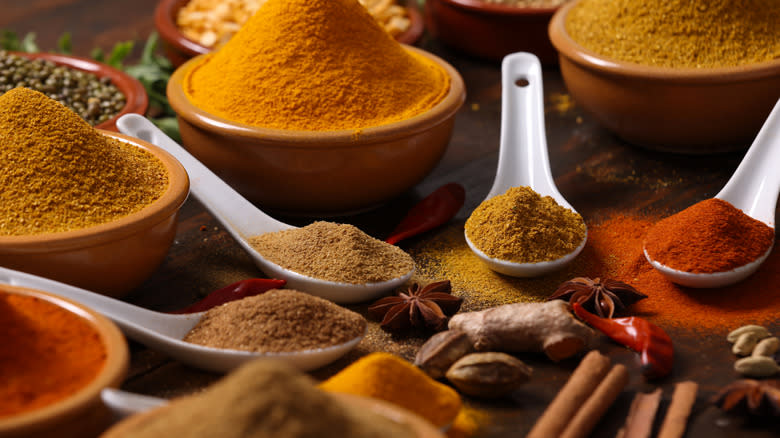
It makes sense that when faced with an ingredient with inherent sweetness, like a carrot, one would gravitate toward sweeter flavor profile spices, such as cinnamon, ginger, nutmeg, allspice, or cardamom. These are marvelous pairings, but they can become cloying if not delicately used. They also may not enhance the inherent bitter, earthy notes that carrots can have.
Try using spices with heat and more savory components to accentuate some of these more nuanced flavor notes. Personal favorites include cumin, smoked paprika, sumac, cayenne pepper, and saffron. And spice blends, like curry powder, ras el hanout, chili powder, Ethiopian Berbere, or garam masala, can amp up the complexity of your carrots regardless of whether you braise, roast, or eat them raw. Lastly, don't forget to lean into umami-rich condiments. Hot sauces like gochujang, sriracha, or harissa paste are a dynamite way of taking a carrot from common to charismatic.
Poach Carrots In An Aromatic Liquid To Infuse Them With Flavor
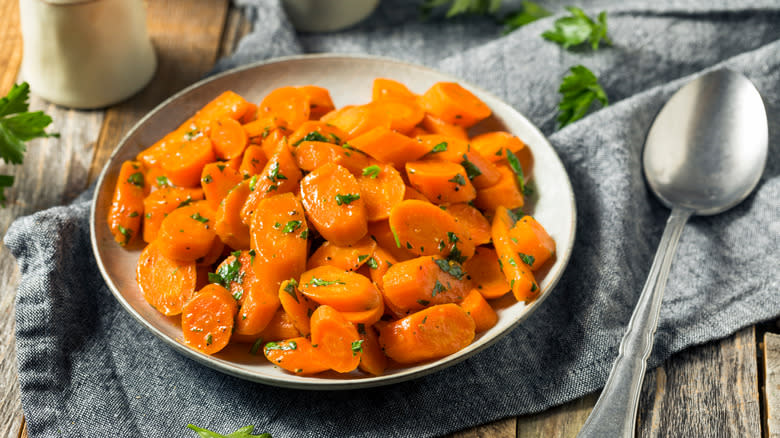
Poaching is an often misunderstood and underutilized cooking method that can impart complex flavors into your meat, vegetables, and fruit. It is often confused with boiling, which is perhaps the worst way to cook vegetables if you are seeking to maintain nutrients and preserve the integrity of the texture.
The primary difference between the two is the heat at which the liquid is kept during the cooking process. While the boiling point of water occurs at 212 degrees Fahrenheit, when poaching, water should be kept between 158 and 203 degrees Fahrenheit or at a simmer. This lower cooking temperature ensures that flavor, color, texture, and nutrients are conserved.
Ideal vegetables for poaching are those that are denser in texture. Carrots are perfect for this purpose. You want to use young ones that are slightly thinner in diameter. Infuse your poaching liquid with flavor using an alternative liquid, like stock or wine. Adding aromatics, like onions, garlic, and fresh herbs, will also amplify the flavor of the poaching liquid.
Lastly, add butter to create a glistening coating on the poached carrots. Be careful not to overcook your carrots, regardless of which flavors you use. You want them just tender but not mushy.
Cook Carrots In Alcohol To Help Boost Their Aroma
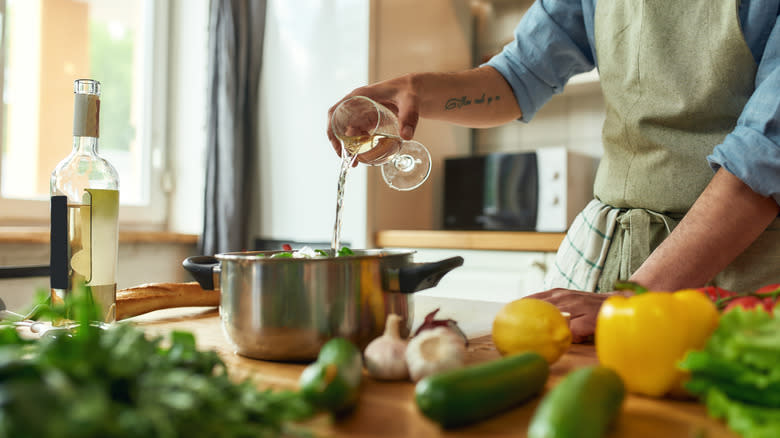
While cooking with alcohol influences the flavor of your foods, it can also impact how your food smells. When beer, wine, or liquor is added to a dish, the alcohol adheres to fat and water molecules, encouraging their distribution to your taste buds and nose. This is key since taste and smell are integrally interwoven. The key is to know what kind of alcohol to use.
When it comes to cooking vegetables, like carrots, you may want to opt for alcohol that will not impact their vibrant colors. Red wine, port, or a stout might add an appealing depth of flavor, but it will turn your bright carrots a sad brown color. It is better to opt for an acidic white wine, like a sauvignon blanc or pinot grigio, or a fortified wine, like vermouth or sherry. These will encourage flavor and aroma development without altering the appearance of your carrots.
Though you can use alcohol in virtually any cooking method, it is ideal for braising, poaching, and roasting carrots. Be sure to cook the alcohol sufficiently to concentrate the flavors and aromas and eliminate residual sharpness. Lastly, whatever you do, never use cooking wine. These are loaded with sodium and lack the depth of flavor necessary to contribute good flavor and aroma.
Use Heirloom Varieties Of Carrots For Complex Flavors
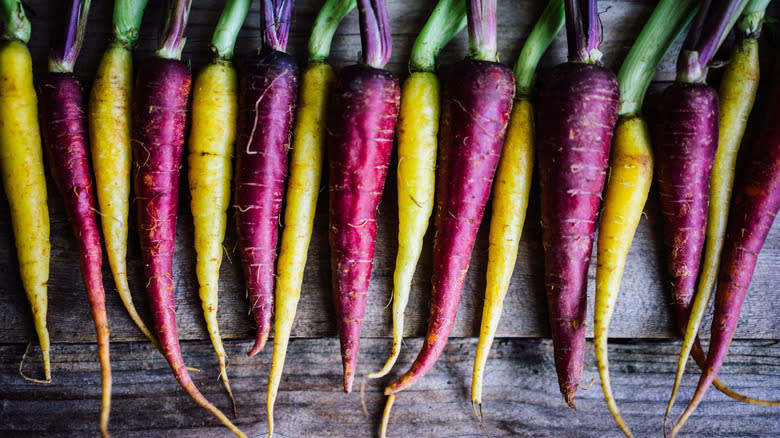
Based on the bags of orange carrots you see for sale at most grocery stores, you'd get the sense that carrots represent a kind of orange monolith, and all have relatively similar flavors and nutritional profiles. This couldn't be farther from the truth. Visit any farmer's market in the country, and you will see carrots in a rainbow of colors ranging from yellow to deep purple to red.
Typically, the spectrum of colors dictates the pungency of flavors, with white carrots being the mildest and purple ranging from spicy to extremely sweet. These colors also influence certain nutrients. Though vitamin and mineral levels remain consistent between colors, particular antioxidants differ.
Red carrots contain more lycopene, while purple carrots are exquisitely high in anthocyanins. White and orange carrots are usually higher in lutein than darker ones. For the best flavor, nutritional value, and visual appeal, try incorporating as many different colored carrots into a recipe as you can find.
Layer Umami-Rich Ingredients To Boost Meaty Flavor
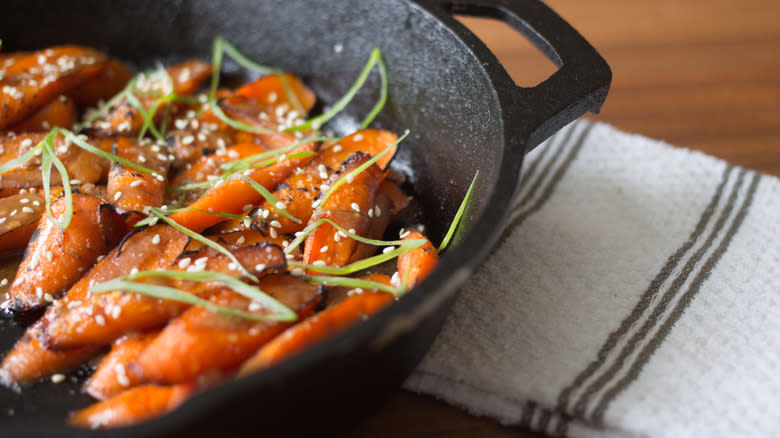
The importance of utilizing umami-rich ingredients in cooking carrots cannot be understated. These ingredients are rich in glutamate, inosinate, and guanylate. Their superpower lies in how they confer a kind of savoriness to dishes that helps to stimulate digestion and enhance satiety. Layering these flavors onto the sweet, earthy, and slightly bitter profile of carrots will facilitate the development of complexity in any carrot dish, raw or cooked.
Primary ingredients considered robust in umami components are often aged or fermented. Hard cheeses, like parmesan, would be among these, as would kimchi. Meats, fish, and mushrooms are all natural sources of umami flavor. These can be cooked with carrots or served next to them on a plate to create an intricate balance of flavor components.
Additionally, condiments like miso paste, soy, Worcestershire, or fish sauce are rich in umami flavors. These can be added to a braising or poaching liquid to infuse your carrots as they cook. However you decide to incorporate umami into your carrot recipes, do so with moderation, as many of these ingredients can quickly overpower your dish.
Read the original article on Daily Meal.

